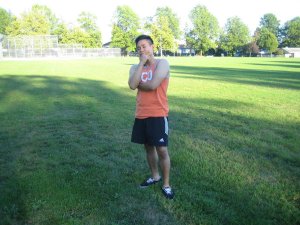
Cold sores are small, fluid-filled blisters that develop on or around the lips. These are also called fever blisters. Often, these blisters appear in groups of patches. The blisters may break open after a few days leading to clear fluid leaking and resulting to a scab that would occur for a few days. Healing period usually takes a few days to two weeks. The most common complication arising from cold sores is dehydration because of refusal to intake food and other sources of nutrition.
Cold sores are caused by herpes simplex virus. Most people are infected in their childhood or young adulthood. During the primary infection, symptoms do not usually manifest. The infection will remain during the duration of the lifestyle and when a trigger comes, cold sores may appear.
Causes of Cold Sores
Cold sores are caused by a highly contagious virus, herpes simplex virus. There are two types of herpes simplex virus, names Type 1 and Type 2. Type 1 is what results to cold sores or oral herpes. Type 2 would affect the genitals. Cold sore can be passed on by sharing saliva or saliva contact or direct contact with sores. The following can trigger cold sores:
- Common cold and other viral infections such as, influenza
- Sunlight
- Physical or emotional stress
- Hormonal changes such as during menstruation
- Exposure to windy conditions
Symptoms of Cold Sores
Although cold sores are caused by herpes simplex virus, type 1 of this virus will not always show symptoms, especially during its first infection. However, in succeeding infections, any of the following symptoms may occur:
- A collection of small, painful blisters that develop outside the mouth, frequently on the lips, chin, nostrils and cheeks.
- Usually not in the mouth but if it does occur inside the mouth, it is frequently found on the gums or palate
- May burst within a few days and develops a crust
- Crust will dry up and fall off typically after 10 days
- Heat or burning sensation in the face
- Painful to swallow
- Fever
- Sore throat
- Swelling
- Swollen neck glands
- Tiredness
First Aid Management for Cold Sores
Although there is no cure to get rid of the infection, there are several remedies that can be done at home to relieve the pain and reduce discomfort. The following are to be used as tips and should not be satisfied for first aid courses. To learn more about cold sores and how to treat other viral infections of the body, enroll in First Aid Training.
- Do not pop the blisters nor should the scab be picked to avoid secondary infection.
- Topical antiviral creams may be applied on the blisters. Povidone-iodine ointments may also minimize symptoms. These are most effective as soon as cold sores appear.
- Cold sore patches may be applied on the lesions.
- Apply ice on the blisters to soothe the pain. Do not apply ice directly and wrap it with a towel to avoid causing further damage to the cold sores.